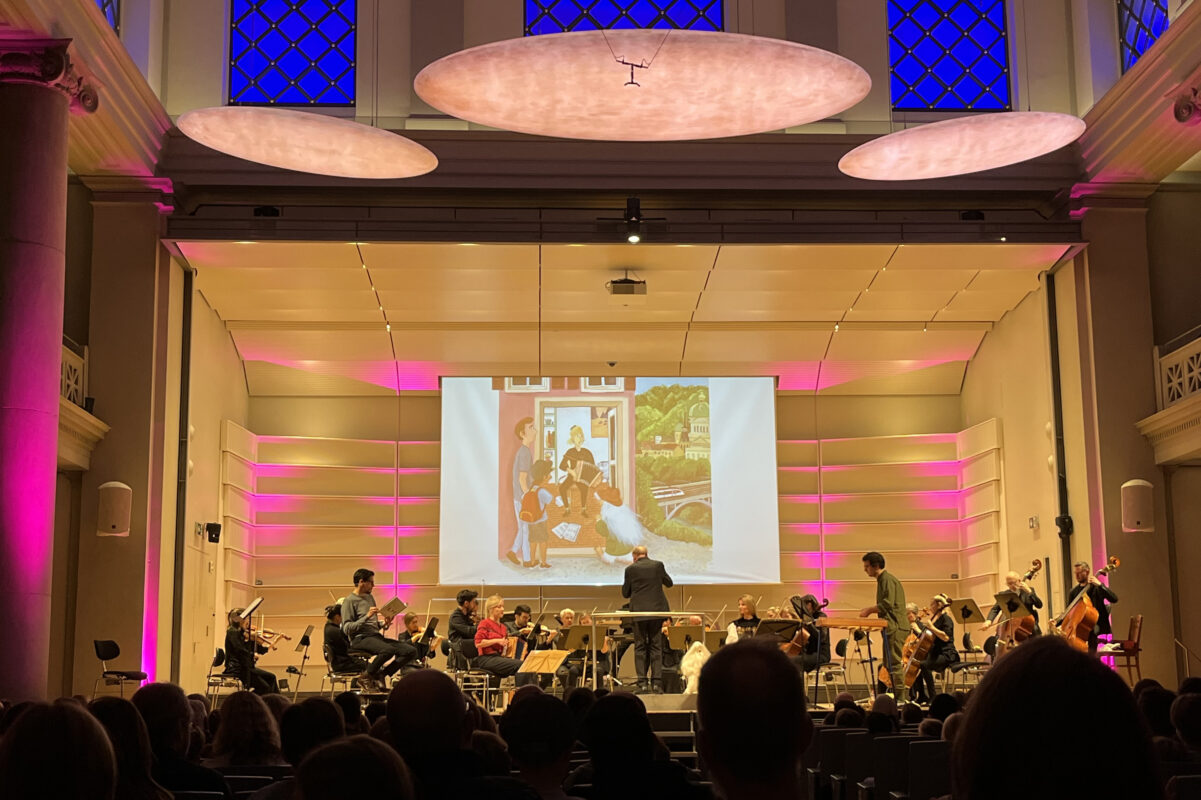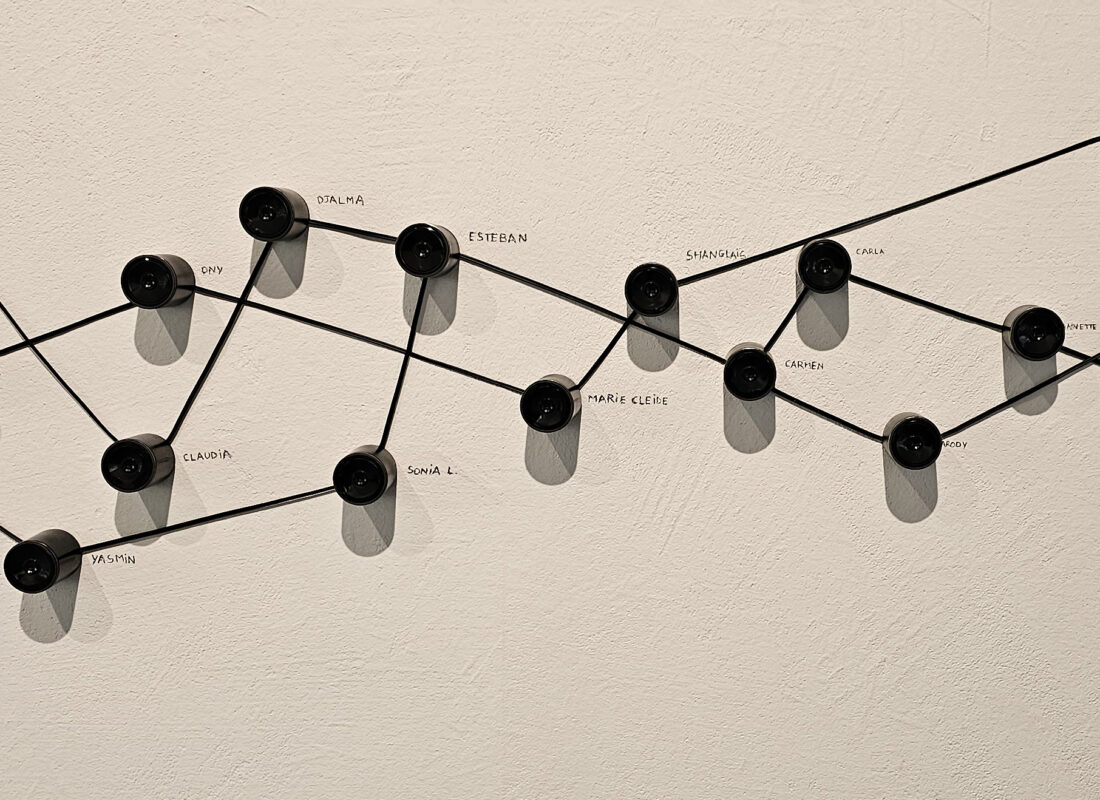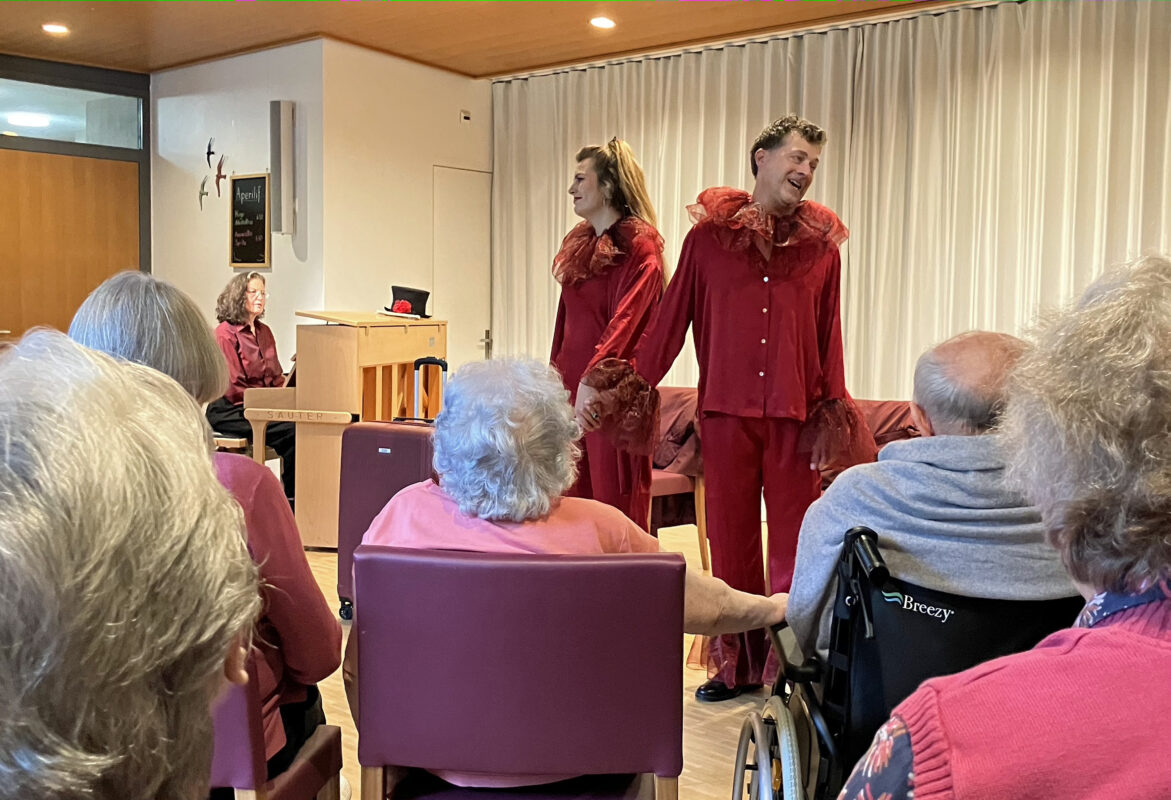Close your eyes and listen
In Beat Gysin's "Movements I", you travel blindly through time, space and sound. It is a special experience, and not just for the ears. A report from the Gundeldinger Feld in Basel.
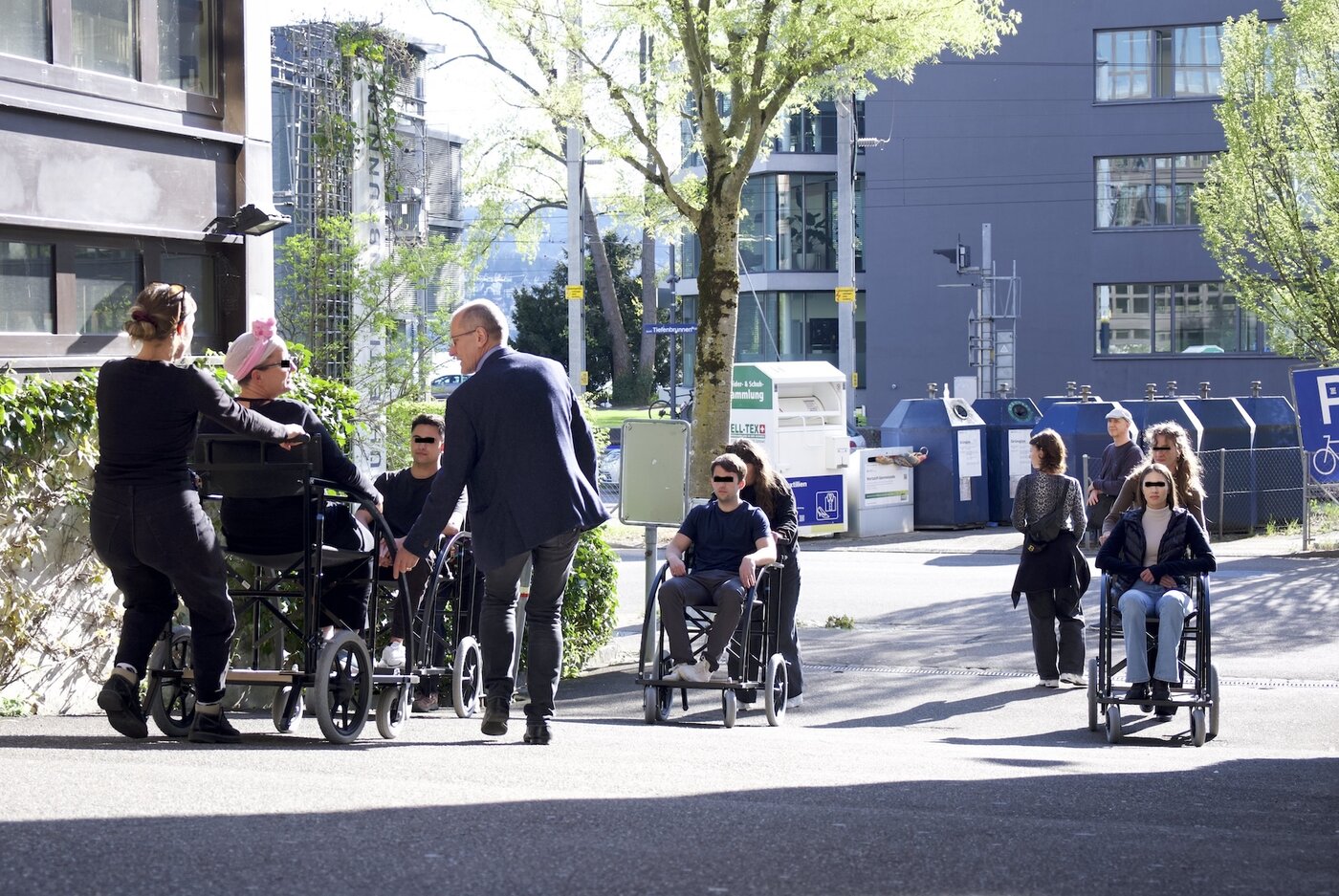
The "Leichtbauten" series by Beat Gysin and Studio-klangraum is entering the next round. After Chronos (2015), Grille (2017), Pipe mill (2019-2021) and House (2022-23) is Movements I is already the fifth project that deals with the relationship between music and architecture.
And while the previous work caused a sensation with some spectacular buildingsThis time it's more about the frog's-eye view, namely how we perceive sound and noises in a changing space when we can't see anything. The principle is as simple as it is effective: you sit on wheelchair-like moving platforms, put on a blindfold and let yourself be pushed around by another person from the audience. Halfway through, the roles change - you go from blind passenger to guide and vice versa. During the ride, you hear random noises from the surroundings as well as musical and tonal interventions at various stations. These were composed by Gysin himself and the Spanish composer Teresa Carrasco.
Rooms full of sounds and music
On the weekend of September 5 and 6, 2025, the Movements I in the Gundeldinger Feld in Basel. The district center at the southern end of the city covers around 12,000 m2 and was significantly developed by architect Barbara Buser: from a former engineering factory to a lively neighborhood meeting place with a wide range of cultural facilities. Today there are breweries, restaurants, studios, construction offices, therapy practices, music schools, violin-making workshops and climbing gyms. Ideal for a sound tour.
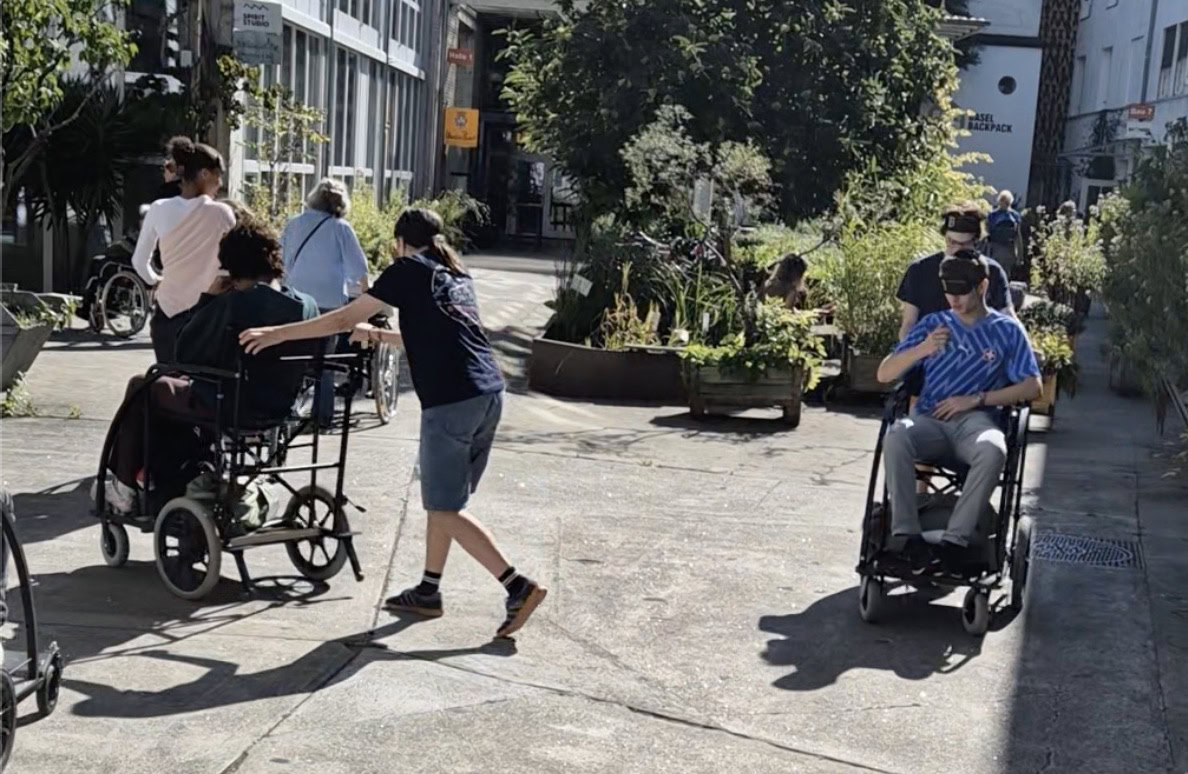
We start in the circus school, where two members of the Collegium Novum Zurich are waiting and set the mood for the acoustic experience with violin, clarinet and spoken word: "I'm here - you're there - come to me - shall I come to you?" can be heard from both sides to activate spatial hearing. Then the journey begins, first with shorter, then longer distances: through a construction office, the lively inner courtyards, into the recording studio, through the bar, into the stairwell, into the workshop or the climbing hall. The guides are instructed by hand signals from Gysin's team where to take which turn and where to stop the rolling platforms at the individual stations.
Orientation is quickly lost
Most of the pushers are very careful and considerate of their passengers, warning them when a doorstep or bump is approaching and trying to make as few swerves as possible. There are also a few boisterous capers from younger participants, but these are soon stopped. And that's a good thing, because as a blind passenger you soon become disoriented: It is surprisingly easy to lose track of whether you are moving or not, how much time has passed and where you are in the area, even if you know it.
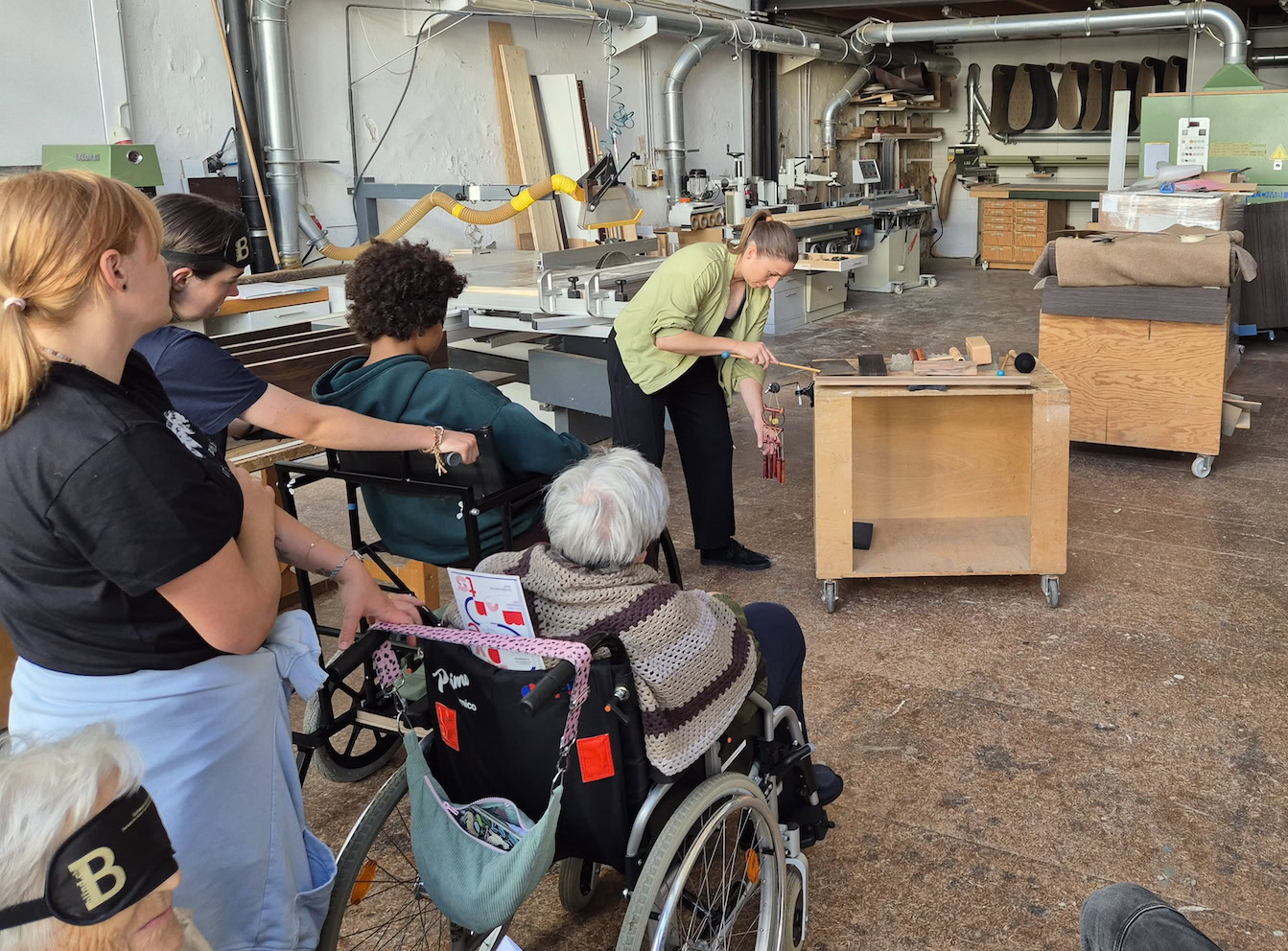
It is also difficult to classify whether the various noises and sounds are actively part of the performance or not. While more or less common instrument solos are played at some stations, which comes close to an active music listening experience, most of the time you move around in a sonic mixing room: sometimes office conversations and vibraphone-like sounds combine, sometimes pencils are sharpened or boxes are painted while a musician trumpets through a tube. At times, you are briefly immersed in atmospheric sounds from the recording studio, and then back again. And sometimes the percussionist bangs on the banisters or steel beams while someone in the workshop next door chisels away at a sculpture.
Listen, smell and have confidence
"Confusing to the max" is how some people sum it up, while others report an "impression of a long journey" or a "crazy experience" after the trip. The majority of people realize that hearing is completely different when you lose your sense of sight. Better? It's hard to say, the "training" was probably too short for that. But certainly more comprehensive, more concrete, because there is less filtering out and more active hearing exploration. Another interesting aspect is the combination with the heightened perception of smell, such as how the wood or metal in the workshops sounds and smells, or simply the smell of coffee and beer in the air. - In a classical concert, this is usually something for the interval at most.
Movements I is not only a spatial, musical and sensory experience, it is also a social event. The division into teams of two (within a small group), who maneuver through the blind ride in role reversal, creates a situation of trust - this is coherent, as one loses a great deal of control and security through the sense of sight. And that brings us to the title of the project, which hints at a possible Part II. Studio-klangraum and Gysin are considering motorizing the moving platforms and having them controlled by an AI. However, in view of the faltering development of self-driving cars, this could still take some time. Gysin's project offers plenty of scope for further thought. Movements I uses music primarily as a stimulus for a holistic experience of the environment and understands it as both a natural and artificial part of it.






